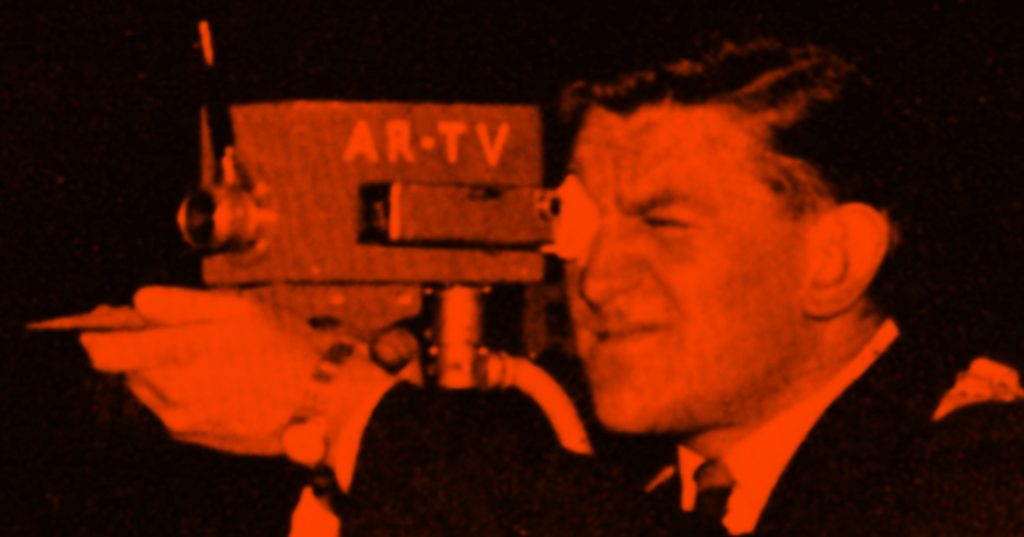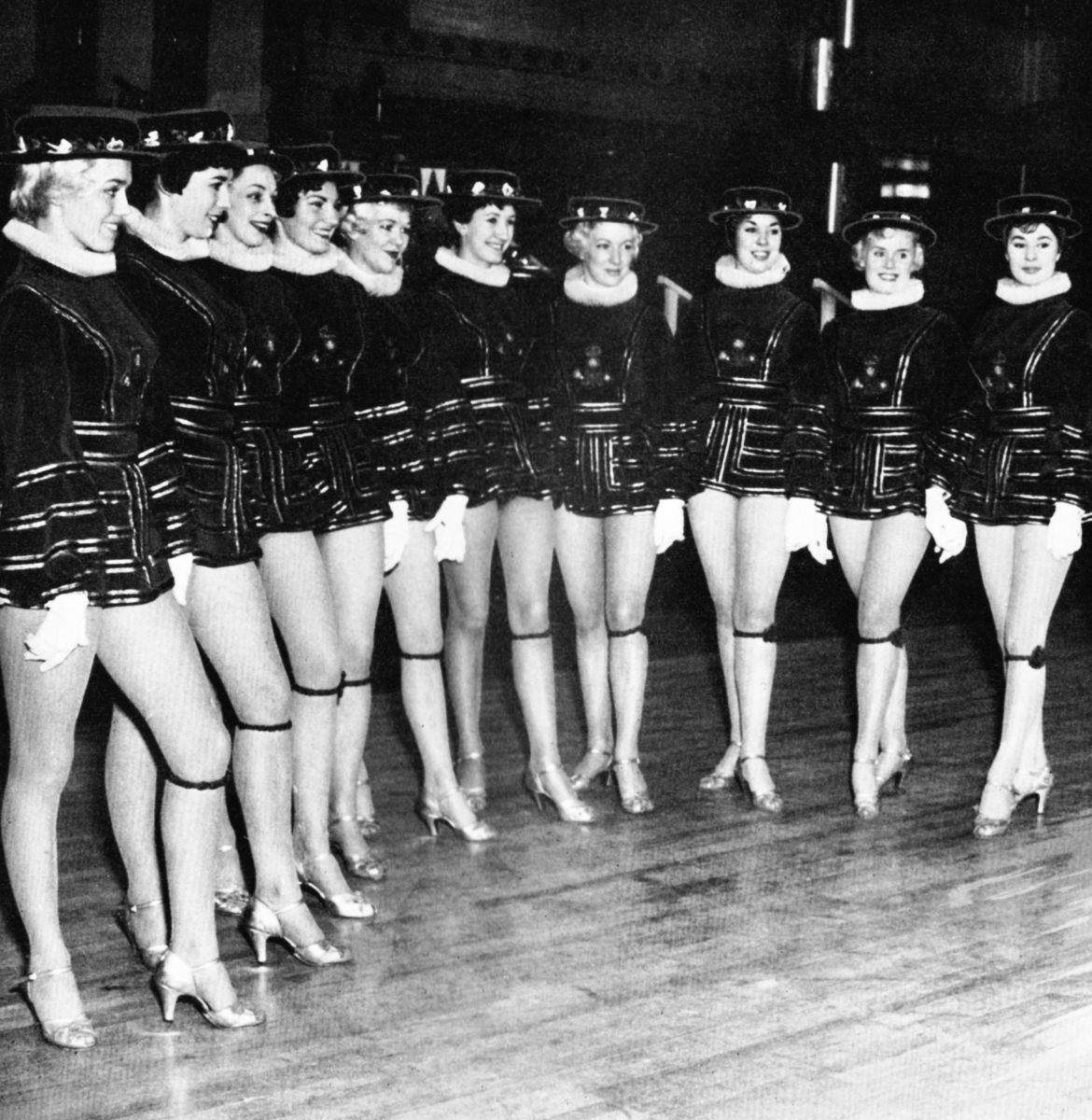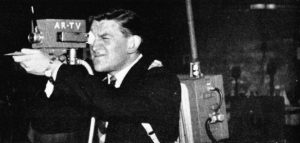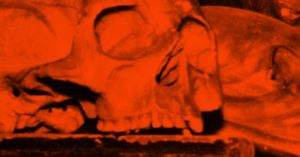Creepie-Peepie
What effect will CSF Portable Television Camera Equipment have on Associated-Rediffusion?


One of the limitations of television, particularly on outside broadcasts, has hitherto been the very great bulk and weight of the television camera, and of the other essential control and power units, etc., to which the camera must always be connected by a thick and unwieldy cable. This dearly restricts the mobility and versatility of the system.
This difficulty has now been overcome by the development of a miniature television camera of such reduced size that the entire equipment including a radio transmitting link can be carried by one man. The camera itself, which measures only 7½ in. × 4 in. [19x10cm – Ed] is carried in the operator’s hand, and the rest of the equipment, control unit, power supplies and transmitter complete with aerial, is carried in pack form on his back, the total weight being 60 lb. [27kg], maximum. This equipment has come to be known by the nickname of “Creepie Peepie”.
The picture obtained from the camera is radiated by the transmitter on a frequency in band 3, and may be picked up within a radius of several miles on any standard type of television receiver. This receiver would normally be housed in the outside broadcast “Scanner” or in a special mobile van, from which the received picture would be passed on to the Master Control Room in the normal way.
For the technical
The camera contains a standard vidicon pick-up tube together with its optical lens system and scanning and focusing coils, and a 2-valve video pre-amplifier; it is connected to the camera control unit via a small flexible multi-cable. There is an optical viewfinder attached to the side of the camera and a zoom lens is provided for use if desired as an alternative to the interchangeable fixed lenses. The entire optical system is of the standard 16-millimetre type.
The Camera Control Unit is electrically speaking in three parts: i.e., the control unit proper, the synchronising generator, and the low-power transmitter. The control unit proper contains the main video amplifier, scanning and sync pulse generators, mixing circuits and the pre-set controls. The controls provided are: target voltage, beam current, black level, video gain and picture size, hold and shift controls. The electrical beam focus control is on the camera itself. The synchronising generator which is fully transistorised is so small that it is built into the lid of the control unit. It contains 32 transistors and 42 germanium diodes, which would have been the equivalent, not so long ago, of 74 valves. The function of this unit is to supply timing pulses to the control unit for the purpose of triggering the scanning, blanking and sync pulse circuits, so that the various components of the picture signal arc put together in the correct sequence. The low-power transmitter feeds about one-tenth at a watt of power to the aerial and the resulting signal may be picked up within a distance of about 100 yards. For all these purposes, the control unit uses only 11 valves.


The power unit contains a transistorised H.T. unit and a miniature 12-volt silver-zine battery giving a running time of 3-4 hours. As implied earlier where a range of a few miles is required a high-power transmitter, having a power of 5 watts, is available. This is in two units: the transmitter itself and the power pack very similar to that described above. The two units arc mounted on top of the other pack-borne circuits, and are included in the quoted weight of 60 lb. A small flexible aerial is fitted to the top of the transmitter.
The complete equipment, therefore, radiates a standard TV signal, and the operator is free to move about wherever he will. The received signal may be fed to the relay frame in the scanner and selected by the programme director just like a normal camera picture.
Extensive tests have had to be carried out to discover the most suitable type of receiver for use with this camera. Good sensitivity and a first-class automatic gain control system arc essentials. The best performance in these respects would appear to be given by the Murphy Receiver Model VR 97, while for adequate performance coupled with ease of portability the Alba portable Model 909 is to be recommended, being very useful for setting up and checking of equipment. Considerable assistance has been given by Messrs. Wolsey Aerials Ltd. in constructing special receiving aerials to our requirements giving the desired characteristics of direction and gain.
There are numerous other matters—mainly problems of communication which have to be dealt with when using a portable camera. It may be required to have a spoken commentary, as well as pictures, from the camera site, and the operator must also be in contact with the programme director in the scanner. Multi-channel radio links are thus involved, which may even have to be extended back to base in certain circumstances.
About the author
We don't have any information on George Sherman. If you know anything about him, please get in touch.



